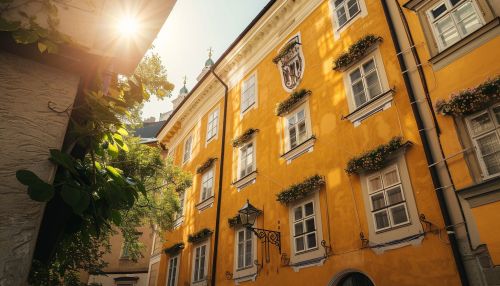Wolfgang Amadeus Mozart
Early Life
Wolfgang Amadeus Mozart was born on 27 January 1756 to Leopold and Anna Maria Mozart in Salzburg, a city in the Holy Roman Empire. He was the youngest of seven children, five of whom died in infancy. His elder sister was Maria Anna Mozart (1751–1829), nicknamed "Nannerl". Mozart was baptized the day after his birth, at St. Rupert's Cathedral in Salzburg.


Leopold Mozart, a native of Augsburg, was a minor composer and an experienced teacher. In 1743, he was appointed as fourth violinist in the musical establishment of Count Leopold Anton von Firmian, the ruling Prince-Archbishop of Salzburg. Four years later, he married Anna Maria in Salzburg. Leopold became the orchestra's deputy Kapellmeister in 1763. During the year of his son's birth, Leopold published a violin textbook, Versuch einer gründlichen Violinschule, which achieved success.
Childhood and Early Musical Training
From his earliest days, Mozart's prodigious talent was evident. At the age of three, he was picking out chords on the harpsichord, and by four, he was composing short pieces. At five, he was playing full pieces on the harpsichord and violin. His father, Leopold, was a highly respected composer and violinist, and he began giving his son formal musical training at a very young age. By the time Mozart was six, he was an accomplished performer on the piano and violin and was highly skilled in sight-reading and improvisation.
In 1762, Leopold presented his son as a performer to the imperial court in Vienna. Mozart's performance was a great success, and he was soon performing for royalty and aristocrats throughout Europe. During these early years, Mozart composed a number of works, including symphonies, sonatas, and operas, which were performed to great acclaim.
Travels and Performances
From 1762 to 1773, Mozart and his family embarked on a series of European journeys in which he and Nannerl performed as child prodigies. These trips were often arduous and gave Mozart the opportunity to meet a number of musicians and acquaint himself with the works of other composers. A significant point of these travels was a visit to Paris and Versailles in the winter of 1763–64. Mozart met a number of musicians and acquainted himself with the works of other composers. A significant point of these travels was a visit to Paris and Versailles in the winter of 1763–64.
During this period, Mozart composed a number of symphonies, sonatas, and operas. His work was well received, and he began to gain a reputation as a talented composer. Despite his success, however, the family's financial situation remained precarious.
Salzburg and Vienna
In 1773, Mozart was employed as a court musician by the ruler of Salzburg, Prince-Archbishop Hieronymus Colloredo. The composer had a number of friends and admirers in Salzburg and had the opportunity to work in many genres, including symphonies, sonatas, string quartets, masses, serenades, and a few minor operas.
Despite these opportunities, Mozart was growing discontented with Salzburg and redoubled his efforts to find a position elsewhere. In 1781, he was dismissed from his Salzburg position and chose to stay in Vienna, where he achieved fame but little financial security. During his final years, he composed many of his best-known symphonies, concertos, and operas, and portions of the Requiem, which was largely unfinished at the time of his death.
Later Life and Death
In the final years of his life, Mozart's financial situation worsened. Despite his artistic success, he was often in debt and was unable to support his family comfortably. His health began to decline, and he died on 5 December 1791 at the age of 35. The circumstances of his early death have been much mythologized, and the cause remains uncertain.
Mozart's music was influential during his lifetime and continues to be influential today. His work is considered some of the best in Western music history. His innovations in forms such as the symphony, sonata, and opera are revered, and his influence on subsequent Western art music is profound.
Legacy
Mozart's music, like Haydn's, stands as an archetype of the classical style. His works spanned the period during which that style transformed from one exemplified by the style galant to one that began to incorporate some of the contrapuntal complexities of the late Baroque, complexities against which the galant style had been a reaction. Mozart's own stylistic development closely paralleled the development of the classical style as a whole.
